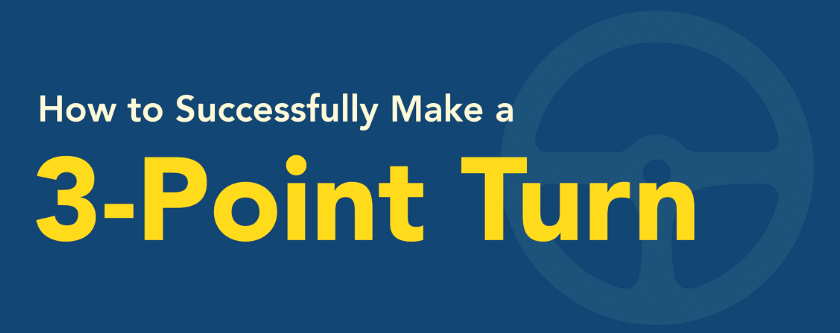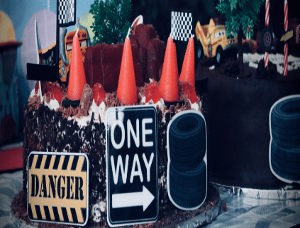3 Point Turn Perfection
- Driving Tips,
- Sep 04, 2019

Whether you are preparing for your driving test, being forced by your dad to learn the car, or just want to know how to perfect already learned driving, one thing that might come in your way of perfection is a 3 point turn. It is one of the most important and frequent questions that you might get tackled when being on a driving license examination.
Before we get started on perfecting the three point turn, let’s first take a look at some information about it and the relevant things you should know before attempting a three point turn.
What is a 3 point turn?
Among many other driving techniques used to get into the opposite lane, 3 point turn, colloquially referred to as a turnabout, is the one where a driver performs three very specific steps that allow him to switch to the opposite lane. It should never be used as a first priority to change the lanes but instead, kept as a last resort.
This is one of the perilous directions changing mechanisms because it consumes a lot of time and always poses a risk of a crash when doing at an area with traffic. In the procedure, a driver shifts to his extreme left like a parallel park then moves towards his extreme left, then reverses his vehicle to straighten it up and starts driving in the opposite lane in the opposite direction. Pretty basic, right! I’m just kidding, I know none of that makes sense, but hopefully, you will understand in the upcoming sections where we explain how to do a 3 point turn.
What to know before learning about 3 point turn?
If you assume you can go on driving a car and perform a successful 3 point turn after reading about it on the internet without knowing anything about the information that is required beforehand than, well, you assume wrong. There are two major things you need to know before learning about a 3 point turn which are:
1- Lanes:
It is quite obvious which type of road you are driving. It can be either a one-way or a two-way road. A one-way road is where the traffic is incoming from one side and ongoing from the other, while on a two-way road, both are done in the same lane. If you want more information and a detailed explanation about this topic, you can check this article.
2- Blind Spots:
Blind spots are areas around your car which you are unable to see from both the rearview or the side view mirrors. You can, however, check them if you turn yourself completely to either left (to check the left blind spots) or towards the right (to check the right blind spots) and peeking through the left or right window of the rear seats respectively. This is a very important step and helps you identify hidden bikers or fast-moving cars that might be at a really close range to you and a crash is imminent if you do not take care. You can easily avoid it if you check the blind spots before turning.
How to do a 3 point turn?
Now that we know about lanes and blind spots, we are ready to take the final step and know everything there is we could do in order to perform a perfect three point turn.
1- Indicate Left Turn: Anytime you are going to change lanes or make a turn, make it a habit of turning on the indicator to let the drivers around you know about your intentions so they can make necessary changes to their driving patterns.
2- Check the Traffic: Before you perform a parallel park (you will learn about what it is if you don’t already know), you should check the traffic behind and around you. Use the rear and side-view mirrors and also check the blind spots properly in order to do that.
3- Turn Left: Turn smoothly to your extreme left just beside the pavement and park just across the pavement, footpath, or a yellow line on the road. Stop there slowly and ensure that the vehicles coming from behind you don’t crash into your car.
4- Indicate Right Turn: Since you are going to turn right, you need to turn on the right indicator.
5- Check the Traffic and Blind Spots: When you have indicated, ensure that there is no incoming or outgoing traffic and both the lanes are perfectly clear and if there is any traffic, it is far away enough to not interrupt your 3 point turn. Only if these conditions meet should you try to perform a 3 point turn, otherwise, wait for the traffic to clear up.
6- Turn right: If the traffic is clear, turn your wheel completely to your right and drive. It would allow you to be almost perpendicular to the road. This is a dangerous position and blocks both incoming and outgoing traffic. You should always be wary of the traffic before you perform this step, as mentioned above too.
7- Check the Traffic again: When you have turned your vehicle to the right, it is time to check the traffic again. If there is any and there is enough room for them to pass from your behind, let them. Wait till the road is clear.
8- Reverse while checking traffic: Put your car in reverse and turn the wheel completely to left and then slowly back up till you’re back in the lane you started from but are facing the opposite direction. Remember that while you do this, you need to be continuously checking for traffic or anything else so your car does not end up hitting anything.
9- Straighten up while checking traffic: Slowly get back to the lane of your desire, which is the opposite of the lane you started from, and straighten your car up if it was not aligned along the road properly.
10- Drive Away!: And that’s it! You would have been able to perform a three point turn perfectly if you followed and acted on all the pieces of advice and steps mentioned above.
.png)
At the end:
Now that you have learned how to successfully perform the three point turn, you should go out there and practice as much as possible. Practice always helps to take you to perfection and in a small amount of time, you could call yourself the “master of three point turn.”
If you did not understand a part of it, you could always ask an expert driver or consult with a nearby driving training center for help. Easy Driving Test helps you prepare for your driving exams or helps you drive and it would certainly be a good option to consult them if you wish to get more hands-on training and experience on three point turn.













